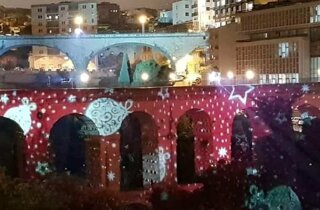
Follow us on:
Cell. 351 9008561
Street F. lli Belleo n. 161 (RG)
e-mail: saroshomes@gmail.com
Ragusa

Ragusa is called the "city of bridges", due to the presence of three very picturesque structures of historical value, but has also been defined by writers, artists and economists as "the island in the island" or "the other Sicily" , thanks to its history and to a socio-economic context very different from the rest of the island.
In 1693 a devastating earthquake caused the almost total destruction of the entire city, reaping more than five thousand victims. The reconstruction, which occurred in the eighteenth century, divided into two large districts: on one side Ragusa Superiore, located on the plateau, on the other Ragusa Ibla, built from the ruins of the ancient city and rebuilt according to the ancient medieval structure.
The architectural masterpieces built after the earthquake, along with all those present in the Val di Noto, have been declared in 2002 World Heritage by UNESCO. Ragusa is one of the most important places for the presence of testimonies of Baroque art, such as its churches and its eighteenth-century palaces
Below are the three bridges and the ancient Square Libertà.


The baroque of ragusa is a reworking of the works or to the drawings, a cue which fits the taste refined and eclectic artist, in fact many of the master-sculptors formed the base on which fantasy, creativeness and the skill of these, reproduced and personalizzò models and schemas, creating with local stone, warm and golden, effects referable only to the baroque ibleo.
It is decorated by the local stone, of scrolls, of empty and full, of columns and capitals, statues, and architectural compositions.
Below in the photo: Architectural Details, and Palace Cosentini.



The cathedral of St. John the Baptist; it is among the largest churches of Sicily, before the earthquake stood in the west part of the city, under the walls of the castle. The master builders planned the rebuilding in the baroque style. Has a majestic facade, rich of carvings and sculptures, is divided into five parties by large columns, on the left side stands the bell tower that rises over 50 metres.
The interior is a Latin cross, is divided by three spacious naves and fourteen columns in the pitch-stone of ragusa as well as the floor, also consisting of inlays of white limestone.
Since 1950, the church is the seat of the cathedra of the bishop and the mother of all the churches of the diocese. At the intersection of the transept and the central nave, in 1783, was erected the dome.
To the side the picture of San Giovanni Cathedral.
The Bridge Vecchio; in 1843 with the construction of the Old Bridge, the city was able to develop well to the south, the bridge in fact was allowed to overcome the natural obstacle of the valley santa Domenica. The bridge in the style of roman architectural also called of the Cappuccini, thus opening up a certain way, the road to the sea.
The New Bridge, and in 1937 he was inaugurated the second bridge, called by the citizens of New Bridge or Bridge of Via Roma. It was built during the fascist period, together with the adjacent Freedom Square, time Square, the Empire.
The Bridge Pope John XXIII, in 1964, due to intense development of the town, was built a third bridge, also called Bridge brand New or Bridge San Vito, which combines the neighbourhood of the Carmine, with the district of the Cappuccini.
To the side of the bridge the old and the new. Under the bridge, to San Vito.


Ragusa, nowadays, the nightlife is on the move in the centre, where it was developed in a pedestrian area, which leads to a variety of shops, typical bars and pubs areas by young people and tourists.
Some of these places are chosen for the fiction "Il Commissario Montalbano" and in other films, including "Ficarra e Picone".
The target audience varies, from families to young people, within which there are found the lovers of Baroque art.
The Villa Margherita is the public garden of Ragusa, recently renovated, where you will find a small pond and a bambinopoli for the little ones.
Always is the meeting point for all age groups, especially in the summer.










